Areola
The word is derived from the Latin for a courtyard, or little open space, and was first used in 1605 by Bauhin applied to the colored area around the nipple of the breast.
The areola is a specialized circular area of skin centered on the nipple, distinguished by its color and protruding mouths of glands. It varies greatly in size, the smallest being in the male, about one inch across, and the largest in very large breasts when the areolae may have a four inch diameter.
The epidermis (outer layer) of the areola is pigmented; two pigments are known, the brown eumelanin and the red pheomelanin. In general the virgin “white” breast has pink areolae, and the virgin “black” breast has dark areolae. Both are likely to darken in pregnancy, but this is by no means a sure test for virginity, many females of very light complexion continue with pink areolae after childbirth.
Areolar glands of Montgomery are a cross between sweat glands and mammary glands; their mouths form little hillocks in the areolae, and in the lactating breast exude a greasy substance which is protective to the skin. At the margins of the areolae the glands are more distinctly of the “sweat” character, and there may be hair bearing follicles.
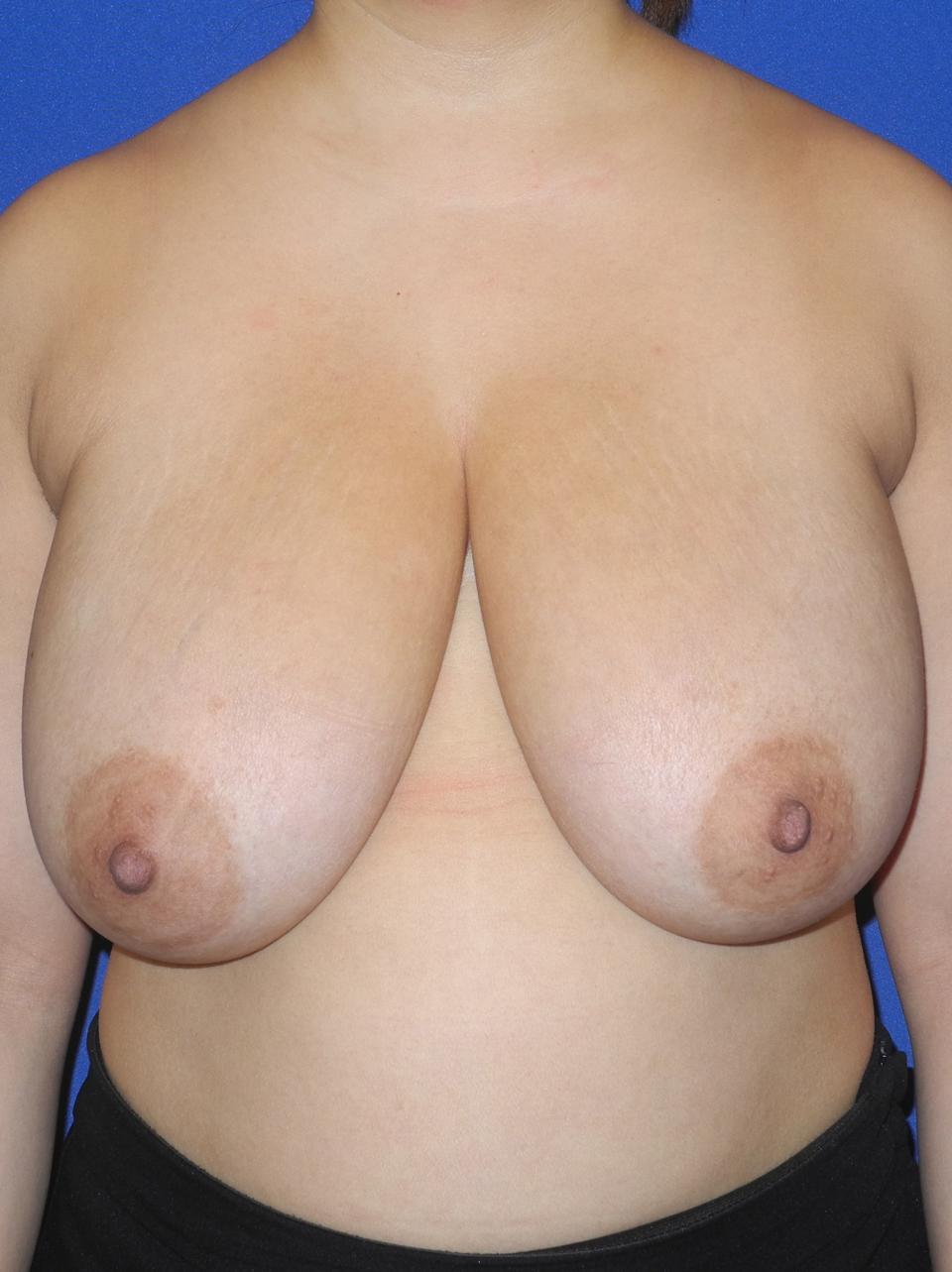 before
before
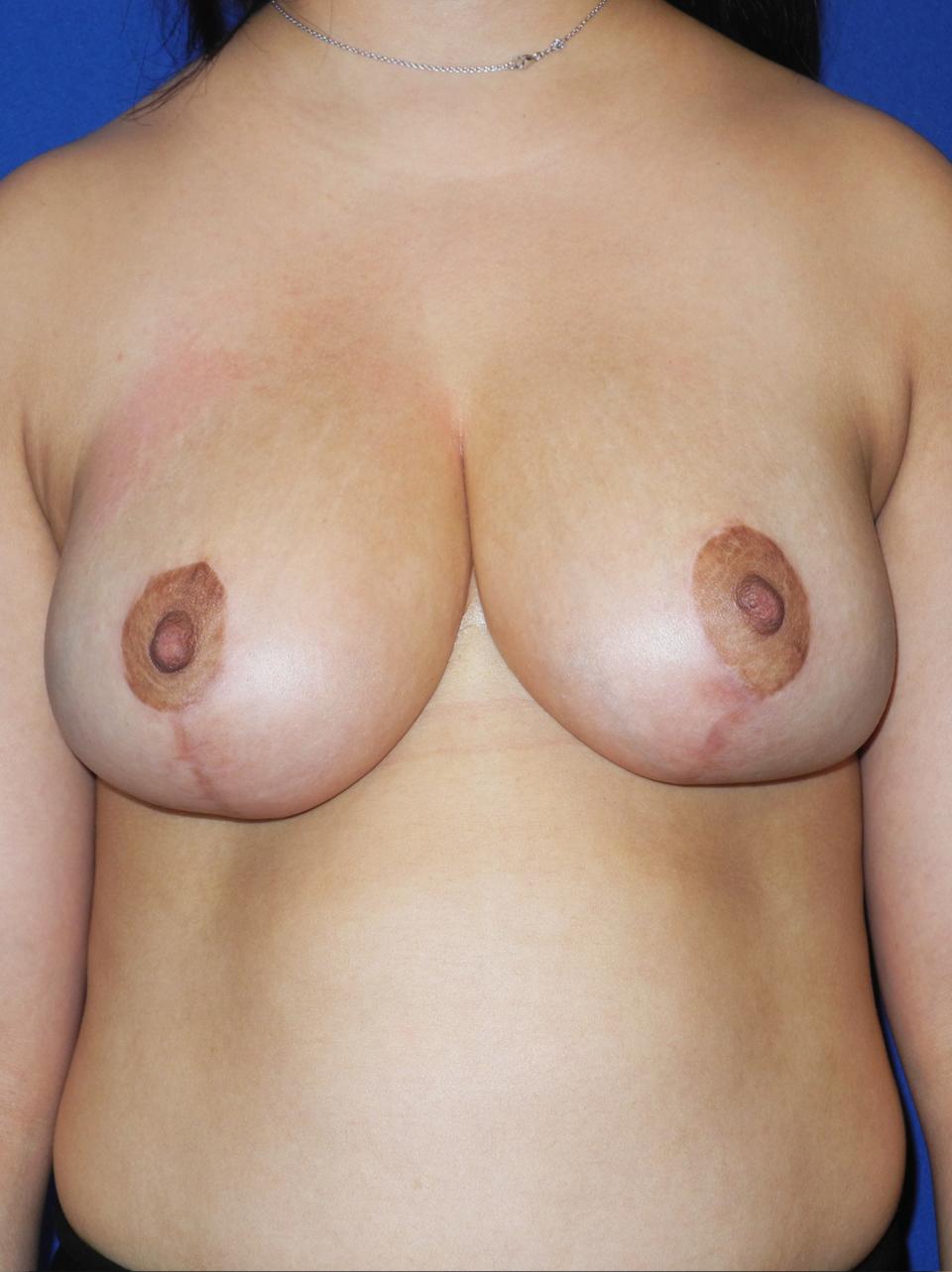 after
after
This individual suffered from large breasts, breast droop and extra tissue in the breast tail and armpit area. She underwent a breast reduction in which slightly more than two and a half pounds of weight was removed from the breasts.
With integrated breast and torso contouring, the breasts are not only shortened in length but then contoured with liposuction to give a rounder appearance. These techniques allow a breast reduction to look like a breast lift. This photograph was taken at approximately five months following surgery. Scars, while still visible, are still expected to mature and fade over the next year.
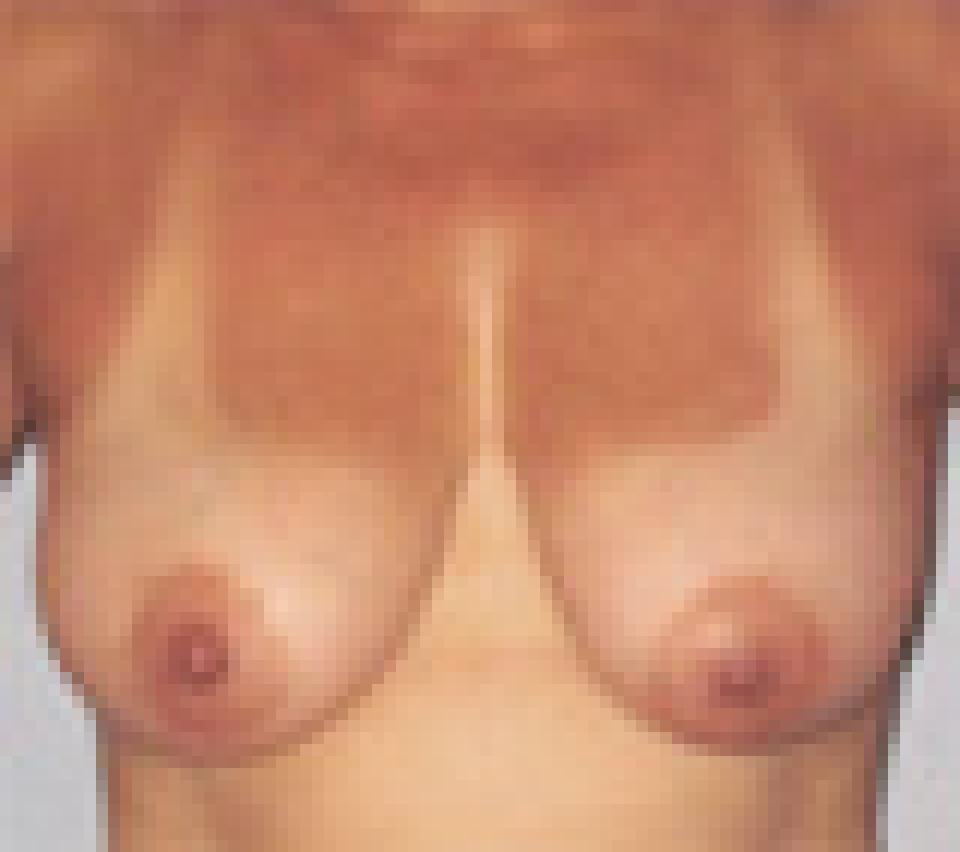 before
before
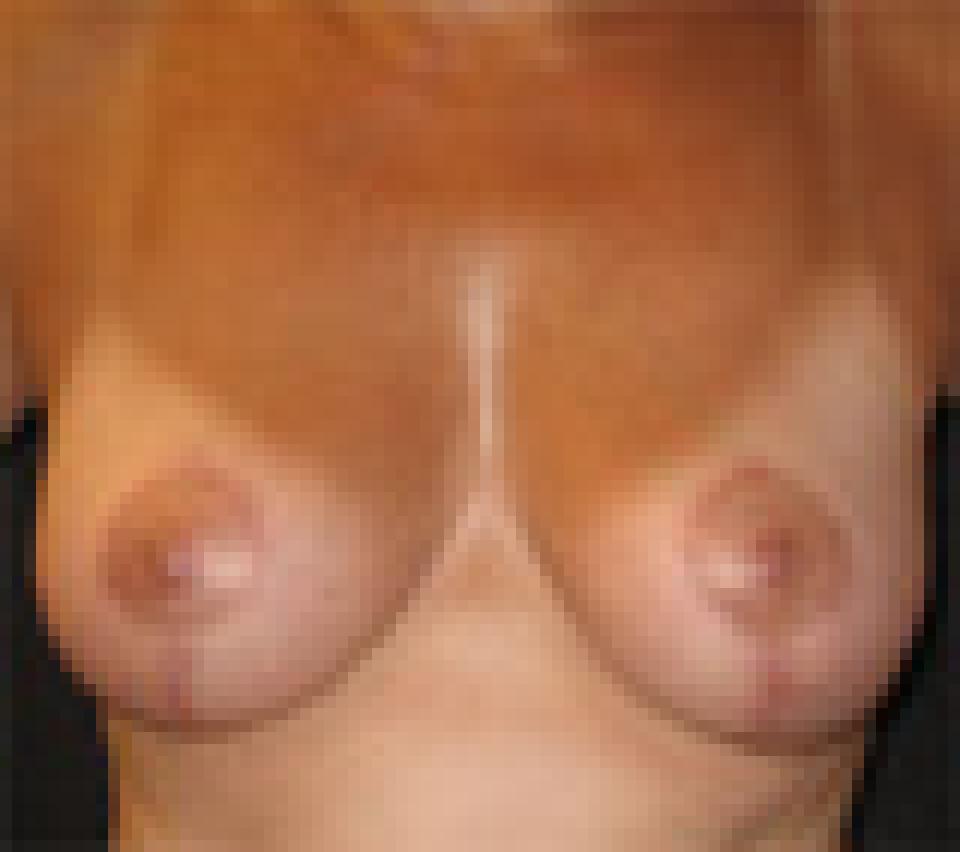 after
after
This case depicts a 52 year old woman who was happy with her breast size, but wished to have more shapely breasts. She underwent a short scar or "lollipop" incision breast lift. No implant was needed to achieve the breast size and shape she ultimately achieved.
The post-operative photographs depict her appearance at 9 months after surgery.
If a woman wished to have only a slightly larger bust size or slightly more fullness in the upper half of the breast, then a small implant may be added at the same time that the breast lift is performed.
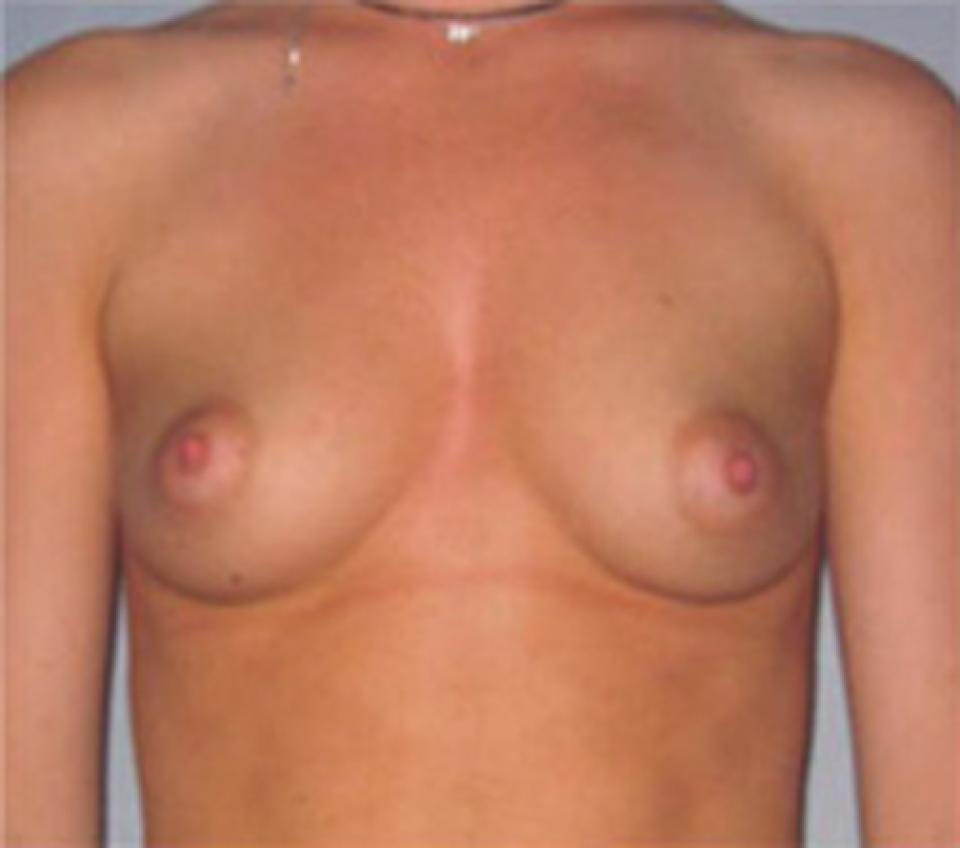 before
before
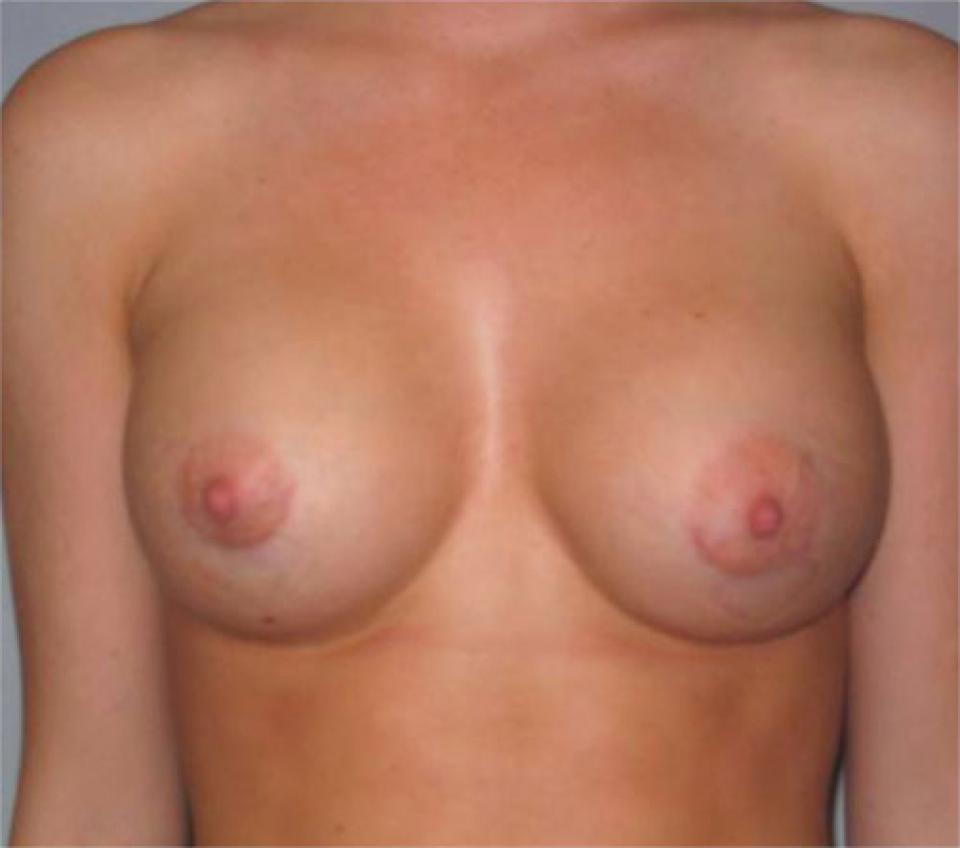 after
after
The following photographs depict an 18 year old woman who wished to have a larger and fuller bust. She underwent breast augmentation with smooth, round 330 cc saline implants.The implants were placed beneath her pectoralis muscles using incisions placed within the areolas.
The post-operative photographs depict her at approximately 6 months after her surgery. Peri-areolar incisions can heal nearly imperceptibly. They are hidden in virtually all fashions and swimwear. Dr. Belsley can place either saline or silicone implants through this type of incision.
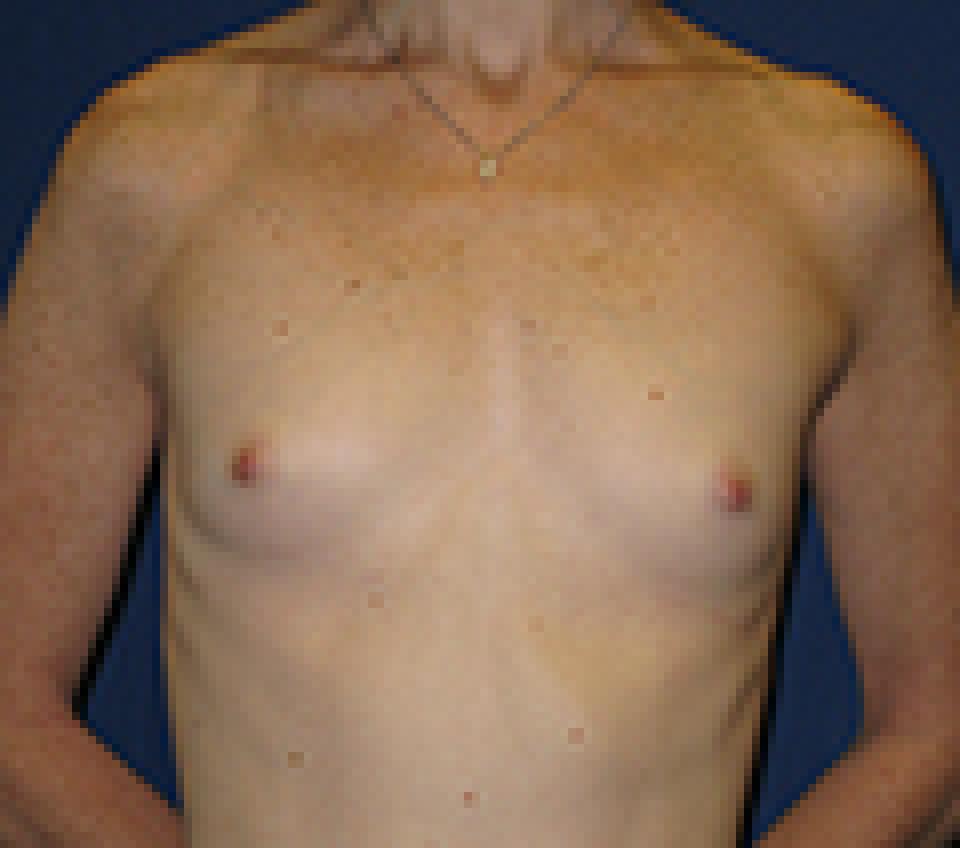 before
before
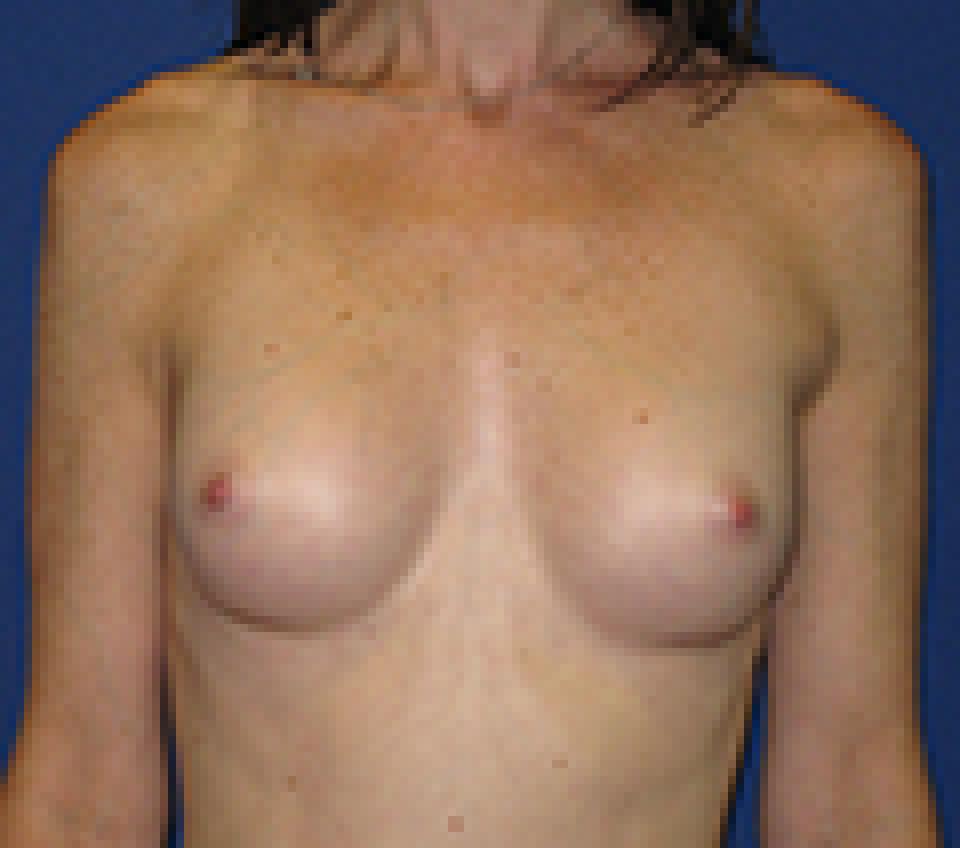 after
after
This 30 year old woman underwent breast augmentation using 180 cc silicone filled breast implants placed partially beneath the pectoralis muscle through an incision along the lower fold of the breast that measured 3 centimeters in length.
Implants can also be inserted through an incision on the edge of the areola, which is the dark colored skin surrounding the nipple. However, when an individual has very small areolas, such as this patient has, this is not possible.
On the other hand, if the areolas are too large or irregularly shaped, they can be resized and reshaped at the same time as a breast augmentation and/or a breast lift is performed. This will, however, result in a scar around the periphery of the new areola. Often, these scars can heal quite well and are less objectionable in their appearance than overly large or irreguarly shaped areolas.
 before
before
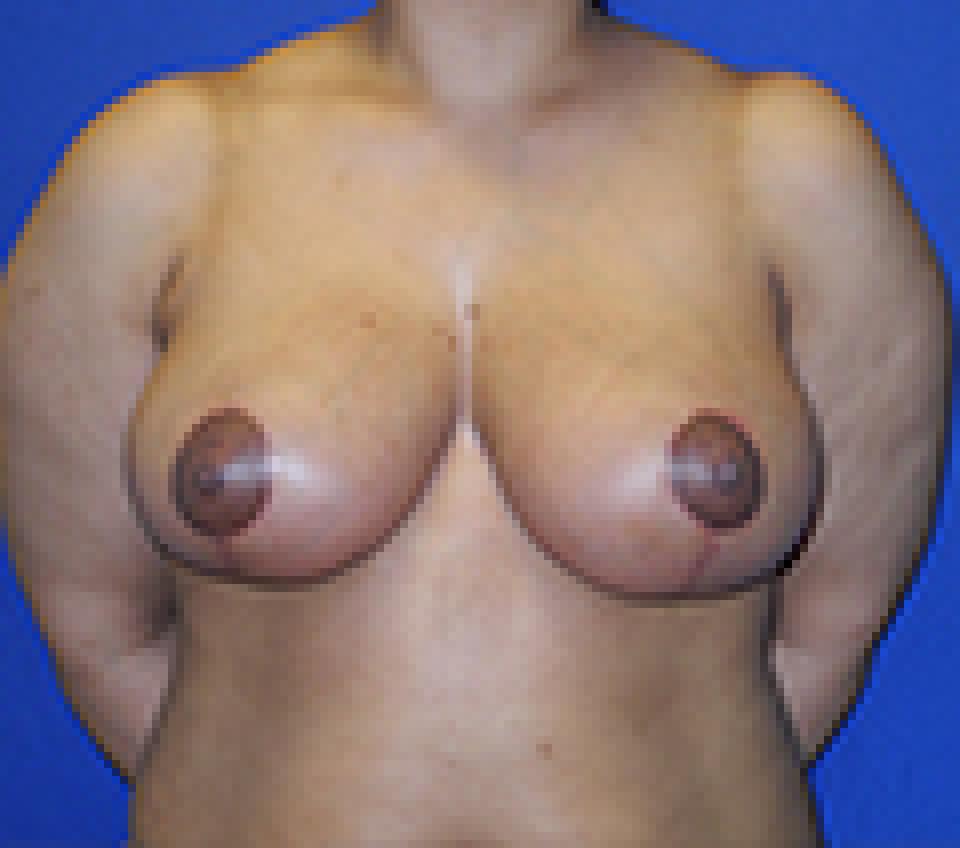 after
after
This 31 year old woman underwent breast reduction in which approximately one and one third pounds of tissue was removed from the right breast and almost two pounds of tissue was removed from the left breast.
In this individual’s case, the incisions used to perform the breast reduction were of the “lollipop” or short scar type. This method of breast reduction avoids any incisions in the cleavage and in most instances along the lower fold of the breast.
This woman, like many others, had noticeably asymmetric breasts. In her case, the left breast was noticeably larger than the right breast. I make every effort to correct this during surgery, but ultimately, no two sides look identical after surgery- just as they did not before surgery.
Also very visible in this individual are the "shoulder grooves" from her bra straps. This is a common issue in women who have extremely large breasts or "macromastia." The pressure from the bra straps typically cause pain, open wounds and sometimes even numbness and tingling in one or both hands from compression of the underlying nerves. Breast reduction can alleviate these symptoms almost instantaneously.
 before
before
 after
after
This case depicts a 37 year old woman who had borne one child and had noted that her breasts had begun to sag and develop a deflated appearance.
She underwent a vertical or "lollipop" incision breast lift along with placement of 300 cc smooth, round saline implants beneath the pectoralis muscles. Her post-operative photographs depict her appearance approximately one year after surgery.
This case study also demonstrates how the nipple and areolar positions located too low and too close to the midline in this case, can be improved as part of the procedure.
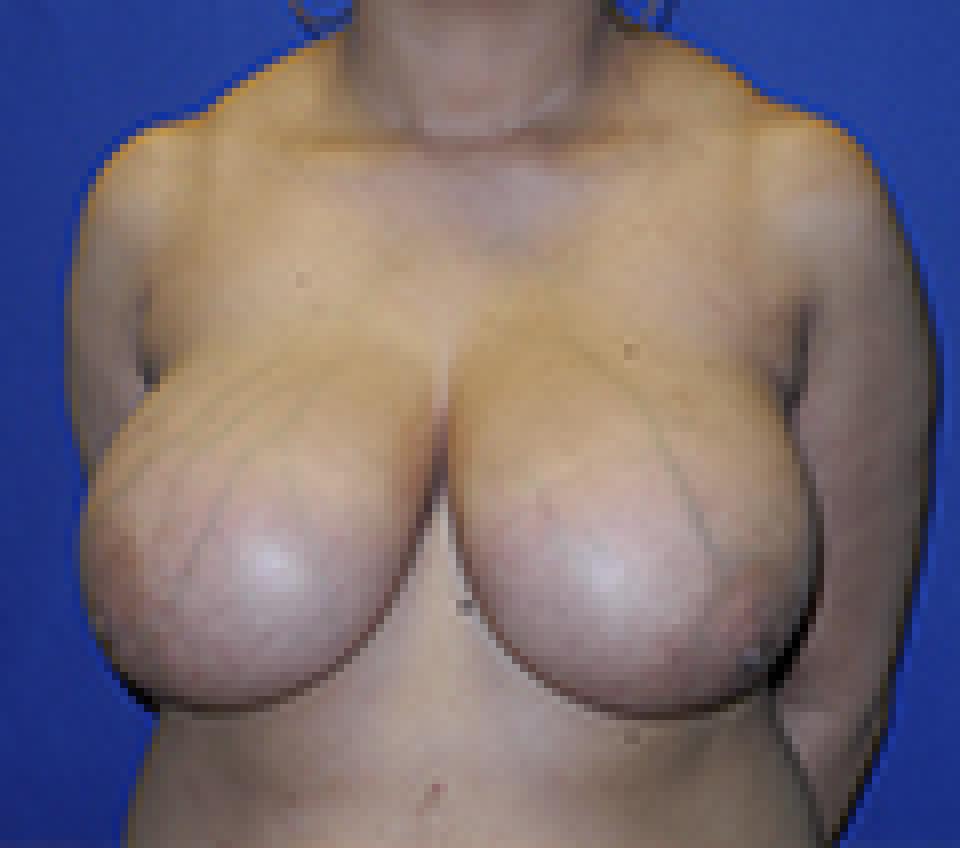 before
before
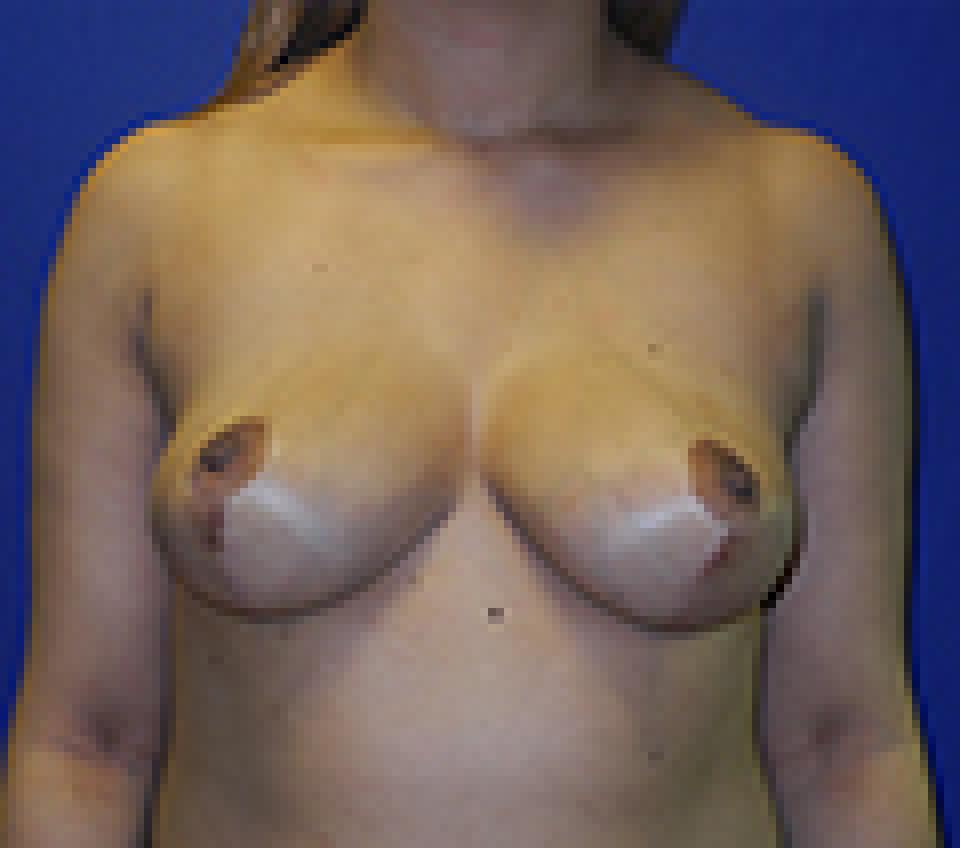 after
after
This 24 year old woman underwent breast reduction in which approximately two pounds of tissue was removed from each breast.
In this individual’s case, the incisions used to perform the breast reduction were of the “lollipop” or short scar type. This method of breast reduction avoids any incisions in the cleavage and in most instances along the lower fold of the breast.
Breast tissue, especially in young women, can be extremely dense and therefore heavy. Breast reduction can alleviate neck, shoulder and upper back pain and a variety of other symptoms that directly result from heavy breasts.
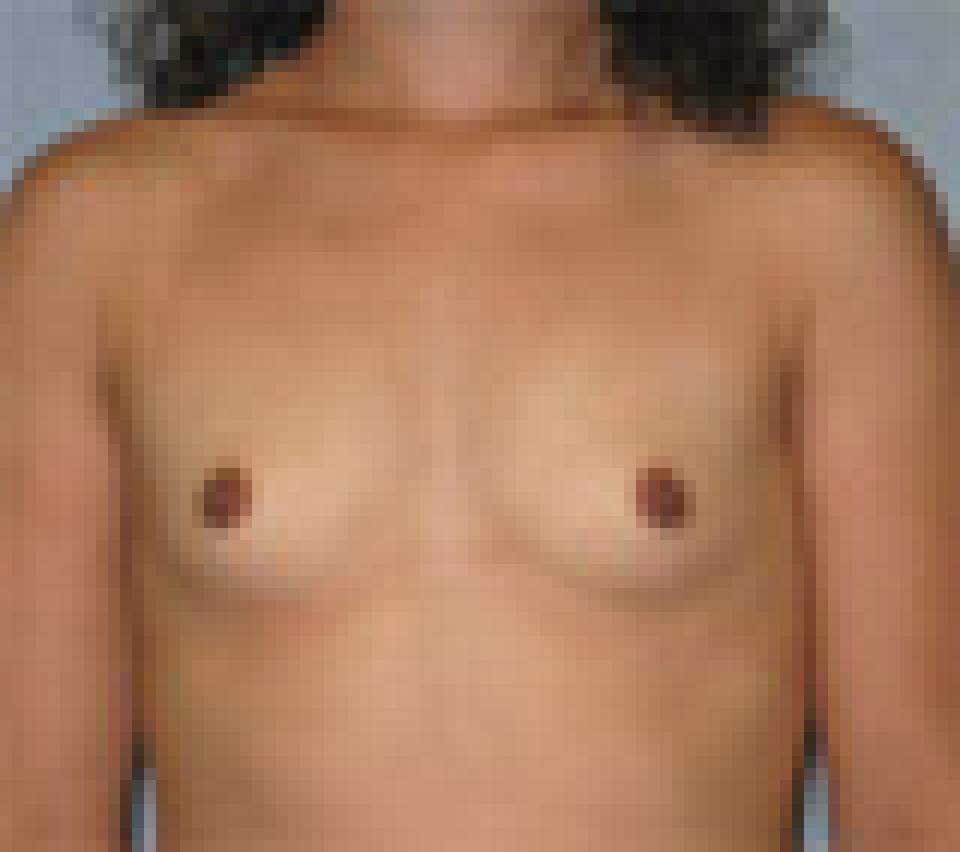 before
before
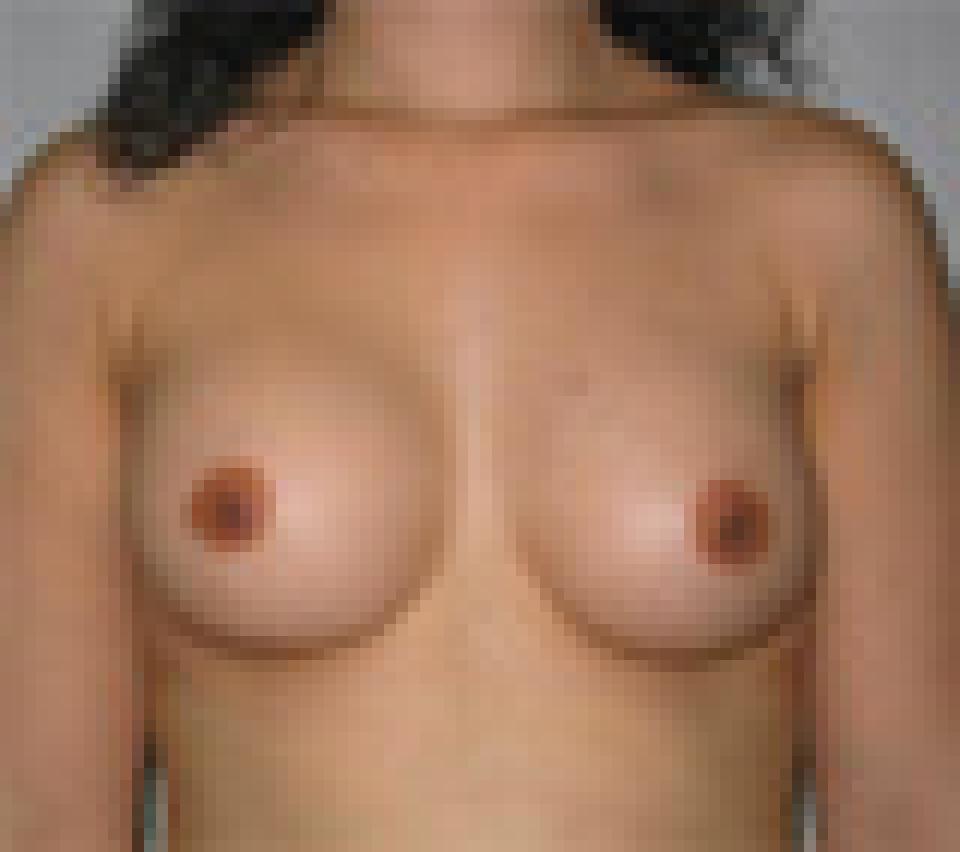 after
after
This case depicts a 29 year old woman who wished to have a larger and fuller bust. She underwent breast augmentation with smooth, round 350 cc saline implants.The implants were placed beneath her pectoralis muscles through an incision in the lower fold of the breast.
The post-operative photographs depict her at approximately 3 months after surgery. The infra mammary incision is a good option for women whose areolas are too small to undergo breast augmentation. Other options for such an individual include placing an incision in the axilla.
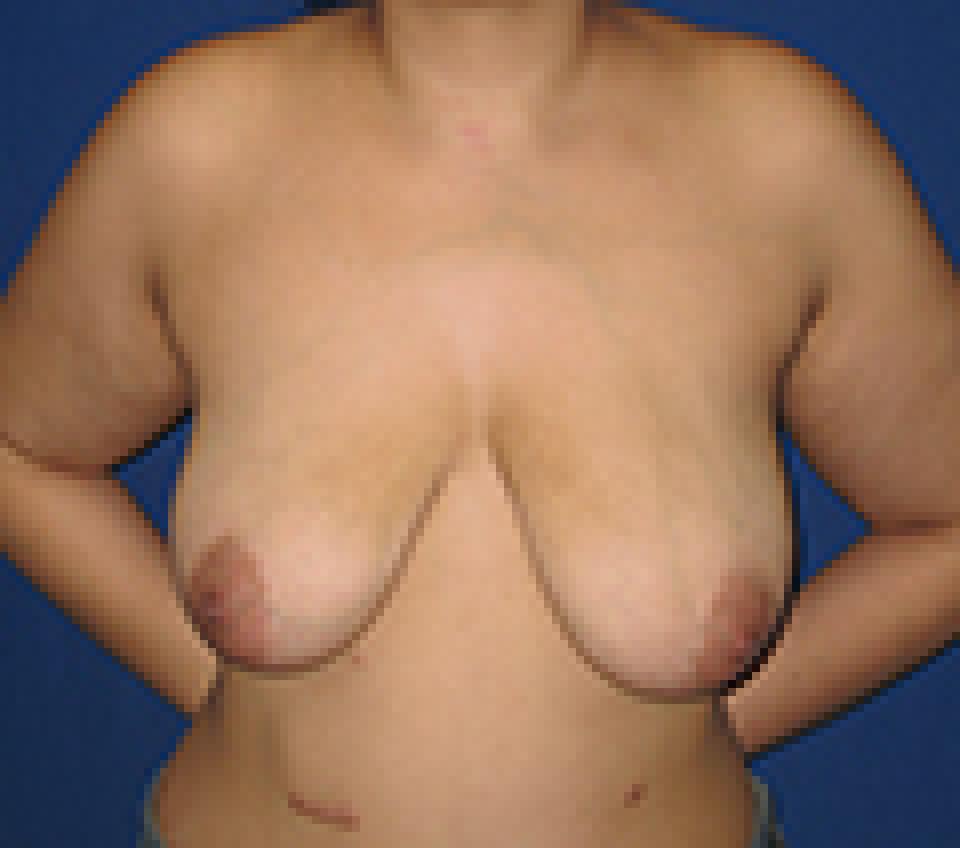 before
before
 after
after
This 35 year old woman reached her plateau weight after losing 56 pounds following bariatric surgery. She had breast lift or mastopexy using a short scar technique which leaves behind scars in the shape of a “lollipop.” Some breast lifts or mastopexies are performed using a technique that results in scars that look like an “anchor,” but I prefer to use this shorter scar technique because scars are never visible in the cleavage nor on the side of the body beneath the arm. This makes swimsuit selection much easier.
This woman has a history of poor scar healing. It is relatively easy to see dark and thickened scars on her abdomen from her bariatric procedure. I feel that it is especially advantageous to avoid the “anchor” shaped scar in individuals whose scars do not heal well.
When performing a breast lift or mastopexy, very little breast tissue is removed. Instead, the existing breast tissue is rearranged so that the new breast shape is typically shorter and rounder than it was previously.
Performing a breast lift in an individual who has lost a great deal of weight is often very challenging. They tend to have an extreme amount of skin excess and relatively little breast tissue. As such, a great deal of skin must be removed while significant effort is made to preserve every bit of breast tissue possible to achieve a natural looking breast.
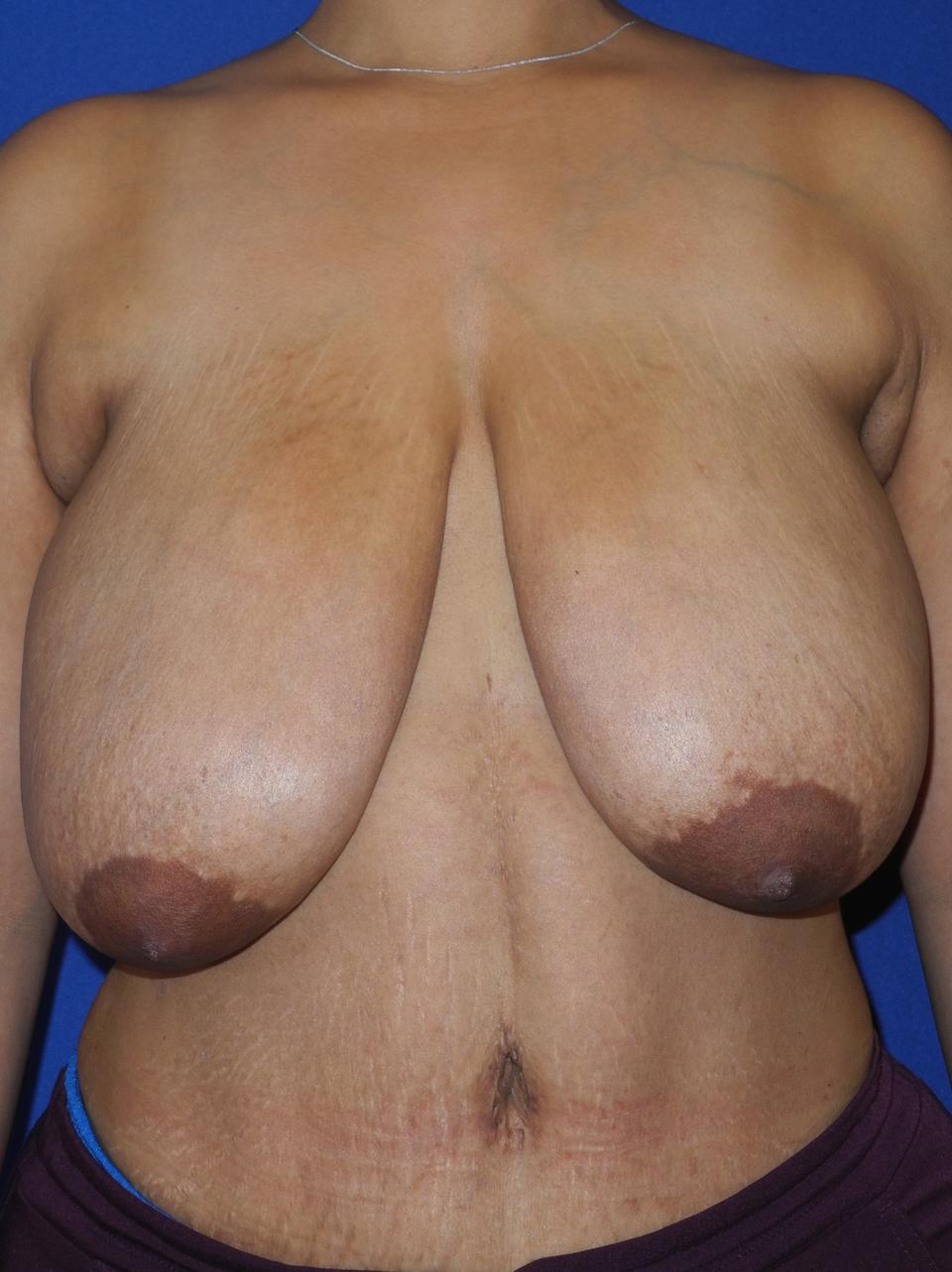 before
before
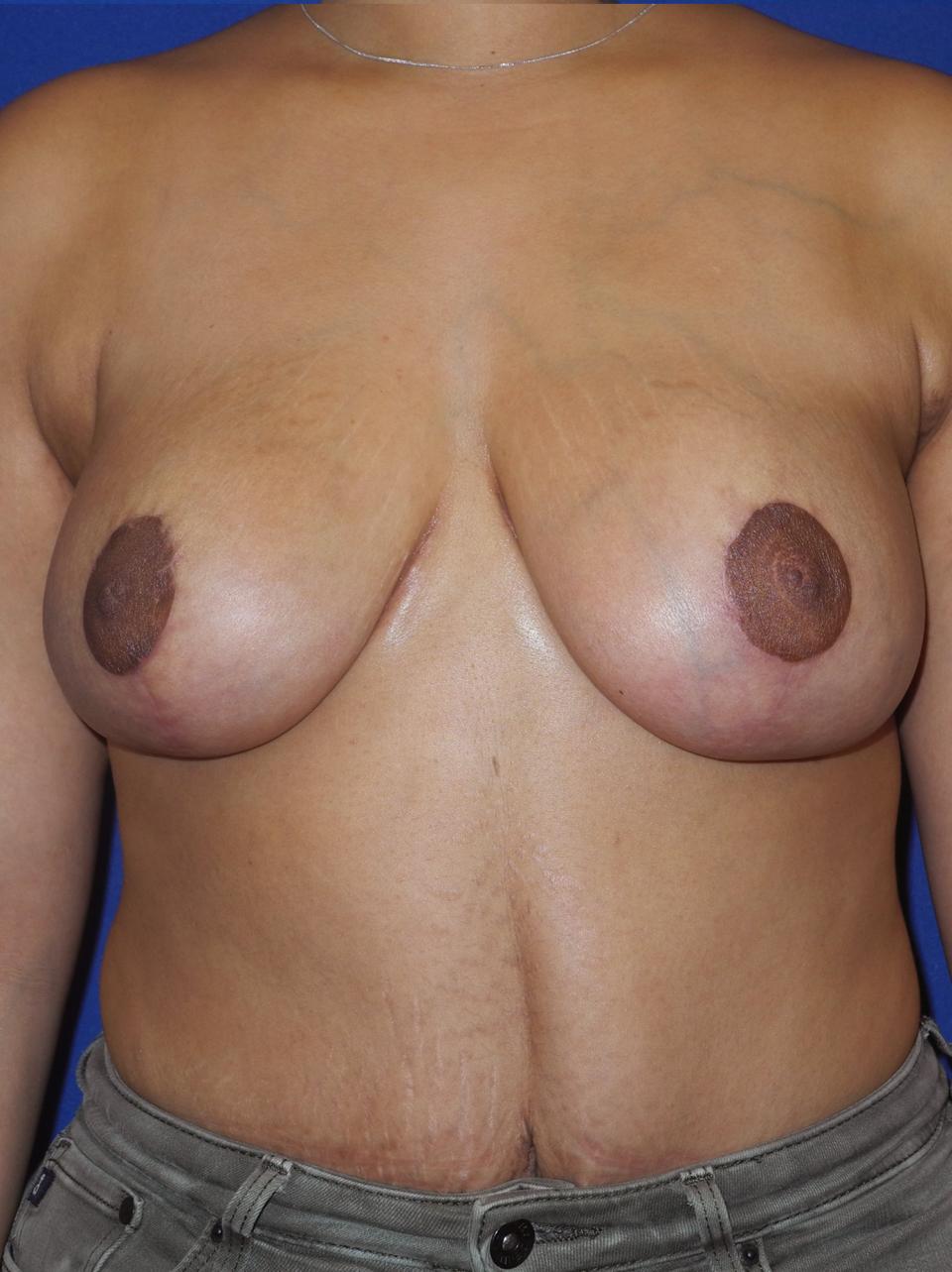 after
after
This individual underwent a breast reduction in which almost two and a half pounds of weight was removed from the breasts. The breasts are shortened in length and lifted to give a rounder appearance. This photograph was taken at approximately four months following surgery. Liposuction of the tissue that lies between the upper outer quadrant of the breast and the upper arm can create a smoother transition between the breast and the arm and improve the fit of certain types of clothing.
In this case, an additional incision was made to remove skin from the tissue that lies between the upper outer quadrant of the breast and the upper arm on the individual’s left side. Only liposuction was performed on the individual’s right side.
Questions Related to Areola
Dr. Belsley's Philosophy of Breast Augmentation
When it comes to deciding what approximate breast size you wish to achieve, the best advice I can give you is that you should be guided by your physical frame. Indeed, you may in fact be limited by it. In my practice, I select implants based upon your chest measurements, the quality of your breast skin and the size of your breasts prior to surgery.
I perform breast augmentation through a peri-areolar or inframammary approach and I place that vast majority of implants at least partially beneath the pectoralis muscle. My patients are welcome to select either saline or silicone filled breast implants. Silicone filled implants can in some cases achieve a more natural feel and may be a particularly attractive option for women with less breast tissue prior to surgery.
More >>Breast Reduction Ideals
Once I have removed enough tissue to achieve an appropriate breast size, the nipple and areola are repositioned, which means that the new, smaller breast also has a “lifted” appearance. While this is not the primary goal of this procedure, it is a fantastic secondary benefit of it. I strive to achieve the same aesthetic standards when I perform medically necessary breast reduction as I do for cosmetic breast lift or mastopexy. Since stretching of the areola is a common problem in patients with very large breasts, I typically reduce the size of the areola during breast reduction.
More >>Dr. Belsley's Philosophy of Breast Lift (Mastopexy)
In my practice, I perform breast lifts using incisions that result in a “lollipop” shaped scars. With good care and a bit of luck, these incisions heal well and the scars are difficult to see from a distance. Nevertheless, a woman who undergoes a cosmetic breast lift must be prepared for scars that are visible. This is one example of a “trade-off” in plastic surgery and of course, there are many others. This is one, however, that I feel is more than worthwhile in appropriate candidates.
More >>Dr. Belsley's Philosophy of Breast Revision
I apply the same criteria to patients who have had their surgery elsewhere as I do to my own patients. I am typically reluctant to re-operate on a breast augmentation patient for minor issues, because each time one undergoes revision, many of the risks of surgery tend to be multiplied. This is why I spend a great deal of time discussing size preferences and the likely outcome of surgery with my patients pre-operatively. It is said frequently that the most common reason for re-operation of the breasts in women who have had breast augmentation surgery is that they wish to “go bigger.” Ultimately, I feel that this is a poor reason to undergo repeated surgical procedures that can only result in more scar tissue, which is unpredictable, and thinning of the native tissues, which are necessary to cover the implant and provide a natural looking result. I encourage patients to think carefully about the risks of revision in cases where there is not a major problem.
More >>Dr. Belsley's Philosophy of Male Breast Reduction
Treatment for gynecomastia can be approached in several ways and is largely dependent upon the “type” of tissue in the chest that needs to be reduced. A physical examination is necessary to create a plan for treatment. Most of the time, I treat these individuals with a combination of ultrasonic liposuction and removal of glandular and breast tissue through a small incision on the border of the areola. Some individuals will be able to achieve excellent results with ultrasonic liposuction alone. Others, may require more extensive incisions. My goal is to give you a natural looking masculine shape that is well proportioned with the rest of your body using the shortest incision possible.
More >>